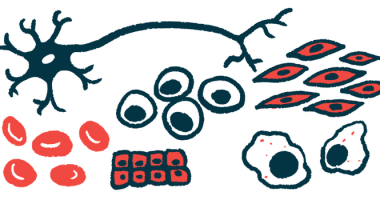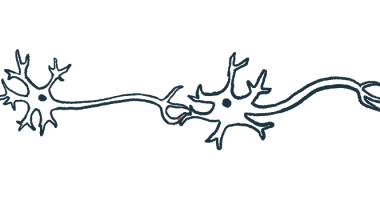Loss of dopamine nerve cells affects opposite side movement sequences
Study offers opening for treatment tailored to type of neurons lost in disease

The selective loss of dopamine-producing nerve cells in one side of the brain of mice, to mimic Parkinson’s disease, impacted the length of movement sequences on the opposite side of the body, but not the same side, a study shows.
The study’s researchers discovered two distinct populations of these nerve cells in the same brain region, one that initiated movement, with greater activity before movement on the opposite side of the body, and another that modulated reward and motivation, which were not associated with body sides.
“These findings have implications for understanding the asymmetry in movement vigor observed in [Parkinson’s disease],” wrote researchers in “Dopamine neuron activity encodes the length of upcoming contralateral movement sequences,” which was published in Current Biology.
“Our findings suggest that movement-related dopamine neurons do more than just provide general motivation to move — they can modulate the length of a sequence of movements in a contralateral [opposite] limb,” study lead Rui Costa, PhD, at the Champalimaud Foundation, Portugal, said in a press release. “In contrast, the activity of reward-related dopamine neurons is more universal, and doesn’t favor one side over the other. This reveals a more complex role of dopamine neurons in movement than previously thought.”
These data “could potentially enhance management strategies in the disease that are more tailored to the type of dopamine neurons that are lost, especially now that we know there are different types of genetically defined dopamine neurons in the brain,” Costa said.
Dopamine in motivation and movement
In Parkinson’s disease, the progressive loss of nerve cells that produce the neurotransmitter dopamine, or dopaminergic neurons, occurs mainly in a brain region called the substantia nigra.
Dopamine is well known to act on brain areas that provide pleasure, reward, and motivation. Still, a drop in dopamine levels in Parkinson’s patients due to the loss of dopaminergic neurons leads to characteristic motor symptoms, including slow movements (bradykinesia) and a reduced amplitude, or length, of movement (hypokinesia).
As a result, it’s been proposed that dopaminergic neurons influence movement by modulating the motivation to move. In Parkinson’s patients, however, movement problems often start on one side of the body due to the loss of dopaminergic neurons on the opposite side of the brain. Thus, movement deficits are not generalized to the whole body.
“Dopamine is most closely associated with reward and pleasure, and is often referred to as the ‘feel-good’ neurotransmitter,” said first author Marcelo Mendonça, MD, PhD. “But, for dopamine-deficient individuals with [Parkinson’s], it’s typically the movement impairments that most impact their quality of life.”
“One aspect that has always interested us is the concept of lateralisation. In [Parkinson’s], symptoms manifest asymmetrically, often beginning on one side of the body before the other,” said Mendonça, who led a research team with Costa to investigate the role of dopamine in motivation and movement.
The researchers developed a behavioral task wherein mice used a paw at a time to press a lever to obtain a reward (a drop of sugar water). At the same time, the activity of dopaminergic neurons in the substantia nigra was monitored in real-time using a tiny, wearable microscope.
The more the mouse was about to press the lever with the paw opposite the brain side we were observing, the more active neurons became.
Although the dopaminergic neurons that initiated movement were found on both sides of the brain, neuronal activity for movements on the opposite side of the body (contralateral) was higher than for same-side body movements (ipsilateral).
“The more the mouse was about to press the lever with the paw opposite the brain side we were observing, the more active neurons became,” Mendonça said. “For example, neurons on the right side of the brain became more excited when the mouse used its left paw to press the lever more often. But when the mouse pressed the lever more with its right paw, these neurons didn’t show the same increase in excitement. In other words, these neurons care not just about whether the mouse moves, but also about how much they move, and on which side of the body.”
The activity in these movement-initiation neurons reflected the number of lever presses, or the amplitude, or length, of the movement sequences. This occurred on the opposite side, but not the same side, of the body. And, the selective activity of these neurons remained stable over time.
A separate population of dopaminergic neurons
Also, data indicated there were two distinct populations of dopaminergic neurons in the substantia nigra, one that initiated movement and another that modulated reward. Moreover, a neuronal response to reward appeared generalized, meaning it wasn’t associated with a side of the body.
“There were two types of dopamine neurons mixed together in the same area of the brain,” Mendonça said. “Some neurons became active when the mouse was about to move, while others lit up when the mouse got its reward. But what really caught our attention was how these neurons reacted depending on which paw the mouse used.”
In the last set of experiments, the researchers mimicked Parkinson’s by selectively depleting dopaminergic neurons in the substantia nigra on one side of the brain. The depletion reduced the length of movement sequences on the opposite side of the body, but not the same side.
“We found that activity in a subset of [substantia nigra] dopaminergic neurons encodes the length of contralateral sequences — a dimension of movement vigor — before movement initiation,” the researchers wrote. “These results uncover a previously unknown relationship between the activity of [dopaminergic neurons] before movement and the length of movements.”







